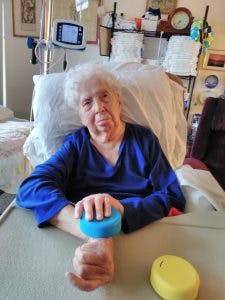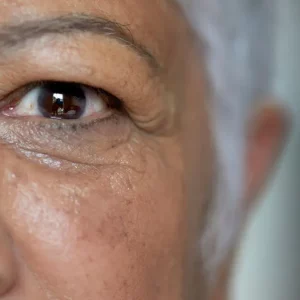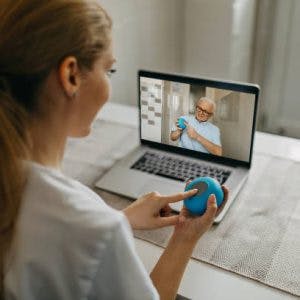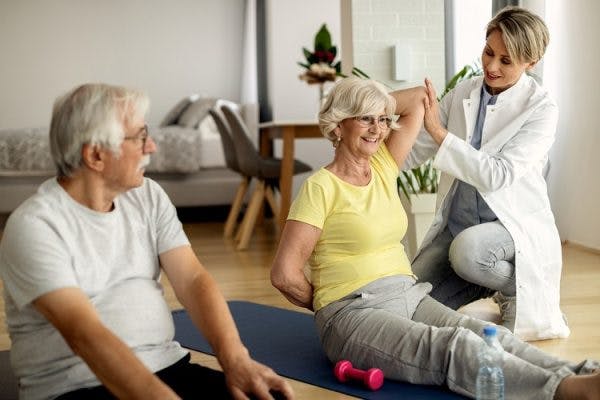Reading stroke recovery stories can be an excellent source of motivation for survivors and their loved ones. While everyone experiences stroke recovery differently, the fundamentals of recovery remain the same. With highly repetitive, task-specific stimulation, individuals can promote neuroplasticity (the brain’s ability to rewire itself) and recover functions affected by stroke.
Stroke recovery stories can inspire you to stay positive and continue to work hard on rehabilitation. This article will share 7 stroke recovery stories from the family right here at Flint Rehab.
7 Motivating Stroke Recovery Stories
Everyone has a unique stroke recovery story. And while each journey is unique; it can be inspiring and comforting to see how others overcame their obstacles.
Here are seven of our favorite stroke recovery stories:
John Focuses on Engagement and Consistency After Stroke
Our first stroke recovery story is John’s. Following an ischemic stroke, the entire right side of his body was paralyzed.
Because his daughter is an occupational therapist, he understood how important repetitions were for stroke recovery. The problem was that performing the same exercises over and over again got boring.
To make things more interesting, John purchased the FitMi, a gamified home rehabilitation device that made it fun and motivating for him to exercise enough every day.
While he initially couldn’t perform some of the exercises, he was able to gradually recover movement. John’s stroke recovery story demonstrates how important it is to understand the basics of stroke recovery and therefore make sure you are getting lots of repetitions.
Anthony Recovers from Stroke at a Young Age
Anthony’s stroke recovery story started when he was only in his mid-30s. Like many, Anthony did not realize that anyone at any age can experience a stroke.
Therefore, he didn’t seek immediate medical attention when he experienced his first symptoms. Ultimately his entire left side ended up paralyzed.
One year later, he continues to regain hand function through consistent movement. Anthony understands that even smaller movements consistently repeated enough times contribute to significant improvements. He also uses an activity tracker to further motivate himself to exercise throughout the day.
Carol Recovers More Than Experts Expected
Carol had a stroke which left her entire right side paralyzed. She left inpatient rehab able to walk with the assistance of a cane and with generally enough motor function to get by at home.
Carol continued to go to outpatient rehab for 4 months and then was discharged and told that she would not recover much more than she already had.
Fortunately, Carol’s stroke recovery story did not end there. She believed differently and purchased the FitMi so that she could work on her stroke recovery at home. FitMi encouraged her to perform the number of repetitions required to stimulate the brain and promote neuroplasticity.
Through her additional efforts using FitMi, Carol regained some abilities she was not sure she would ever do again, including her ability to drive, ride her bike, and travel. She’s living proof that there’s always hope for recovery if you’re willing to put in the work.
Mary Overcomes the Stroke Recovery Plateau
This stroke recovery story is about getting past the dreaded stroke recovery plateau, the phase in recovery when progress appears to reach a halt.
Like many stroke survivors, Mary experienced steady progress while participating in rehabilitation therapies following her stroke. However, after about 2 years, she hit her plateau.
Instead of accepting that her recovery was complete, Mary researched new ways to promote stroke recovery and found the Flint products. The FitMi helped motivate her to do her rehab exercises every day and to surpass her plateau.
Wilson’s Family Supports His Recovery from Stroke
Following Wilson’s stroke, he lost mobility in his right hand, which made everyday tasks difficult to perform.
With the support of his daughter and granddaughter, he obtained the MusicGlove for Christmas. He started noticing improvements in his hand functions after just 3 weeks of use! About 7 months later, Wilson has gradually regained mobility in his affected hand and can perform many self-care tasks on his own.
As you can see from the video, his daughter and granddaughter are extremely supportive of his stroke recovery. Having a good support system will help you stay consistent in your recovery efforts and promote your well-being after a stroke.
Pat’s Medical Background Helped Her Stroke Recovery
This stroke recovery story is told from a different perspective. Pat is a nurse, so she understands that every stroke and its recovery process is unique.
However, she also understood that the brain is capable of adapting through consistent practice. She used FitMi in addition to her physical therapy sessions to optimize her recovery.
When she first had her stroke, she could not move her right leg or arm. In fact, when she received the FitMi, she had to wrap a bandage around her hand to do some of the exercises. With consistent practice, she has significantly improved her motor control and can now perform most of the exercises.
Margaret’s Journey to Regaining Hand Movement

After Margaret’s stroke, she was left with hemiparesis (weakness on one side) and severe spasticity in her affected hand. Here’s her stroke recovery story:
“In 2010, I had a stroke. Since then, my right arm and both of my hands have become increasingly more contracted. I have not been able to open and close my hands. My hands have been clenched and very tight. My arm has been contracted up toward my chest.
In June 2017, I received the FitMi. My caregivers have helped me use the FitMi with my hands. Although I have been unable to use the FitMi every day, I have regularly used it either 2 or 3 days a week.
After years of having clenched hands, my hands are starting to relax. I am able to open and close my hands much more easily.
My arm is relaxing and is not as contracted. I am regaining flexibility of my fingers. I am able to hold the FitMi pucks instead of the caregivers having to hold my hand over the FitMi and moving my hand.
I feel I have made progress in regaining the use of my hands and right arm. My caregivers and Occupational Therapist agree.
I am encouraged and will continue to use the FitMi, and I feel confident I will continue to make progress in regaining my flexibility and use of my hands and right arm. I am very grateful.”
Margaret proves that it’s possible to recover hand movement after stroke — even after years of paralysis.
You Are the Author of Your Stroke Recovery Story
As you can see from these stroke recovery stories, there is always room for improvement! No matter your age or how long it has been since your stroke, the brain is always capable of adapting.
The key to stroke recovery is to promote neuroplasticity through many movements. Consistent practice helps reinforce demand for that function, which encourages the brain to rewire itself. Games like the MusicGlove and FitMi make it fun to get the amount of movements needed to stimulate neuroplasticity.
We hope these stroke recovery stories inspire and motivate you to keep going.















